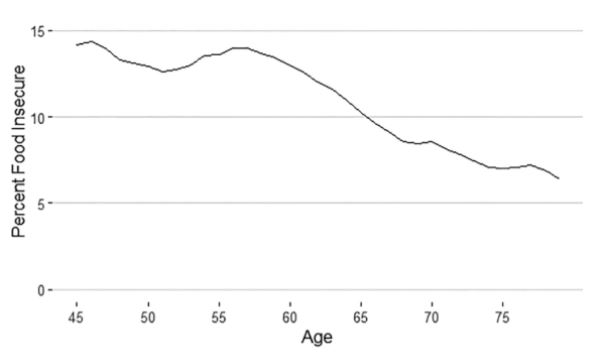More than 5 million seniors in the U.S.—or 7% of the population ages 60 and older—experienced food insecurity
in 2019. A recent study finds that one in five Americans faces insufficient food at some point in their 60s
and 70s. The same study suggests that food insecurity occurs more commonly at later
stages of life than we previously thought.
Montana has one of the highest shares of seniors in the country. Currently, among
1.1 million Montana residents, 213 thousand (or 19.7%) are at or above 65, ranking
the state the 6th in terms of percentage of the older population.
There are federal and state-funded programs that support senior food security with
proven success. This article lists some of the most frequently used programs in Montana.
1. The Supplemental Nutrition Assistance Program (SNAP). SNAP is the largest food assistance program in the U.S. and provides, on average, more than $200 a month to participating households. Eligibility for SNAP mostly depends on income, as well as age and presence of disabled household members. For eligible households, participating in the SNAP is the most effective way to reduce food hardship. The monthly benefits are issued to Electronic Benefits Transfer (EBT), a transaction medium similar to debit cards, and can be used with much flexibility.
However, compared with the participation rate of the younger population, the enrollment of SNAP-eligible seniors is often much lower, with an average participation rate below 50% for eligible seniors. In addition, the latest research shows that people ages 50-60 face a higher rate of food insecurity and participate in SNAP less frequently than the older cohorts (ages 60-80), suggesting that the transition to retirement might pose challenges for many approaching their 60s.
However, compared with the participation rate of the younger population, the enrollment of SNAP-eligible seniors is often much lower, with an average participation rate below 50% for eligible seniors. In addition, the latest research shows that people ages 50-60 face a higher rate of food insecurity and participate in SNAP less frequently than the older cohorts (ages 60-80), suggesting that the transition to retirement might pose challenges for many approaching their 60s.
Age-Specific Food Insecurity Rate in Percentages. Source: Giordono et al. (2021), AEPP
2. Older Americans Act (OAA). The OAA nutrition programs are the second largest food assistance program that supports
senior food security. Federal fund for OAA is provided through Title III Grants for
State and Community Programs on Aging. In 2021, Montana received 6.87 million federal
funding under Title III, among which 2.52 million is received to provide congregate
meals, and 1.35 million for home delivery meals. There are about 170 congregate meal sites in the state and over 1 million meals are served annually. In addition, about 600,000
home delivery meals are served each year. The eligibility for OAA nutrition service
is determined by age only and is not means-tested. Montana OAA is legislated in Montana Code Title 52, Chapter 3 Part 5.
3. Senior Farmers Market Nutrition Program (SFMNP). This USDA-funded program has an income requirement (below 185% of the federal poverty
line), in addition to the age threshold (60 and above). Participants of the program
receive coupons that can be used to purchase fresh produce at farmer’s markets. Currently,
there are about 1700 people participating in Montana SFMNP and 13 distribution sites across the state that accept SFMNP coupons.
4. Commodity Supplemental Food Program (CSFP). Also funded by the USDA, the CSFP requires an income test of 130% of the federal poverty line for seniors. With about 7000 enrolled seniors, the Montana CSFP provides a box of 30 pounds of food to each participant every month.
Except for SNAP, all these programs are administered by Montana Aging Services and Area Agencies on Aging.
See other Related Articles:
SNAP: Is it Enough?

Yang Yu
Assistant Professor


